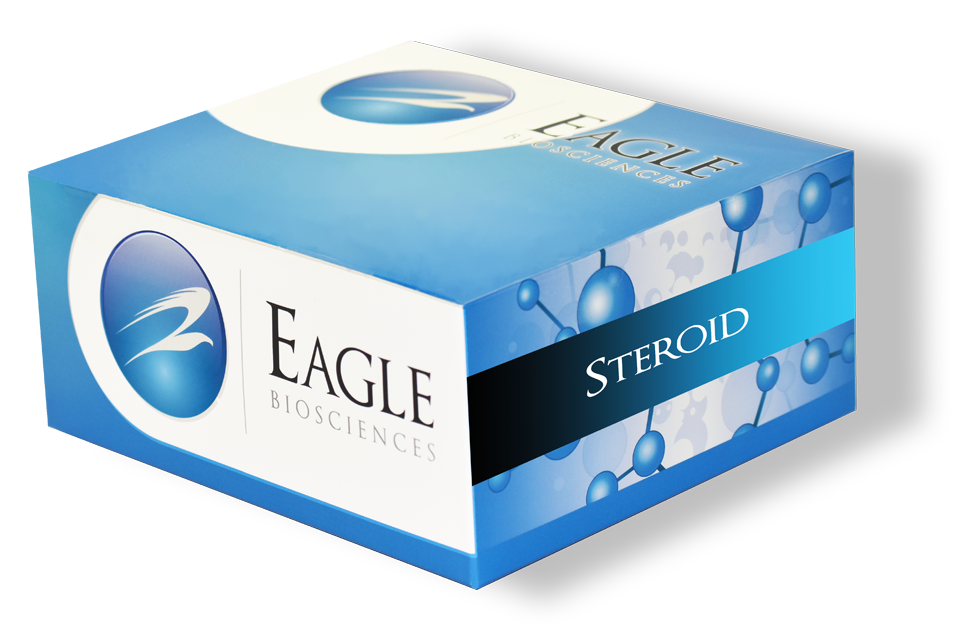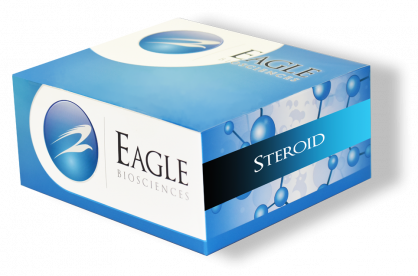Dihydrotestosterone (DHT) ELISA Assay Kit
The Dihydrotestosterone (DHT) ELISA Assay Kit is for research use only
Size: 1×96 wells
Sensitivity: 17 pg/mL
Dynamic Range: 25–2500 pg/mL
Incubation Time: 2 hours
Sample Type: Serum
Sample Size: 25 µL
Controls Included
Assay Principle
The DHT ELISA Assay kit is a competitive immunoassay. Competition occurs between DHT present in calibrators, controls and patient samples and an enzyme-labelled antigen
(conjugate) for a limited number of anti-DHT antibody binding sites on the microplate wells. After a washing step that removes unbound materials, the enzyme substrate is added, and 30 minutes later the enzymatic reaction is terminated by addition of stopping solution. The resulting optical density (OD), measured with a microplate reader, is inversely proportional to the concentrations of DHT in the sample. A calibrator curve is plotted with a provided set of calibrators to directly calculate the concentration of DHT in patients samples and controls.
Specimen Collection and Storage
Approximately 0.1 mL of serum is required per duplicate determination. Collect 4–5 mL of blood into an appropriately labeled tube and allow it to clot. Centrifuge and carefully remove the serum layer. Store at room temperature for up to seven days, at 2-8°C for up to fourteen days or freeze at or below -20°C for up to one month. Consider all human specimens as possible biohazardous materials and take appropriate precautions when handling.


